

BIZARRE




House Ballroom culture emerged as a response to the racial bias against Black contestants in drag balls, which are pageant-style competitions where queer and trans contestants defied laws against wearing clothing associated with the opposite gender.
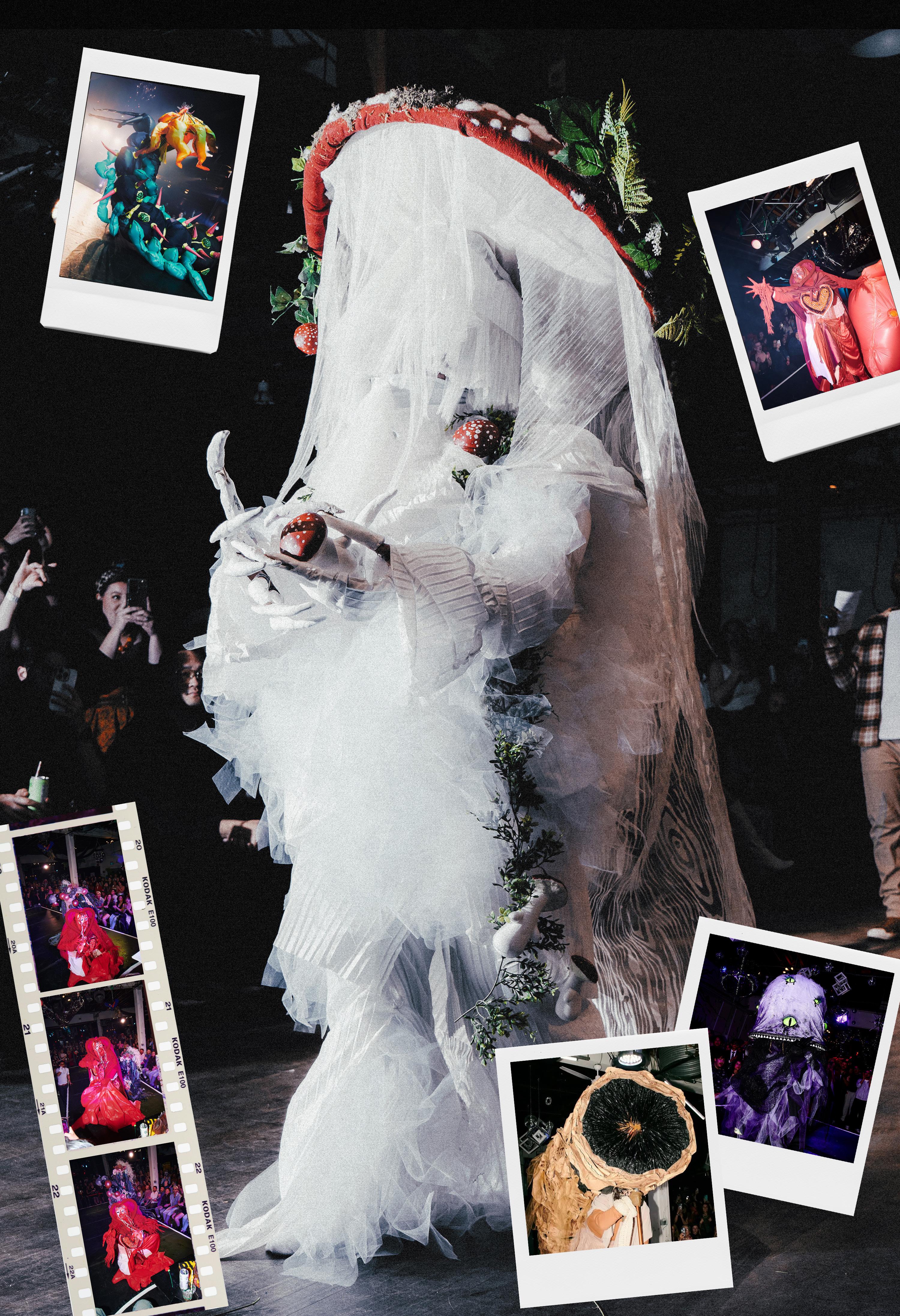


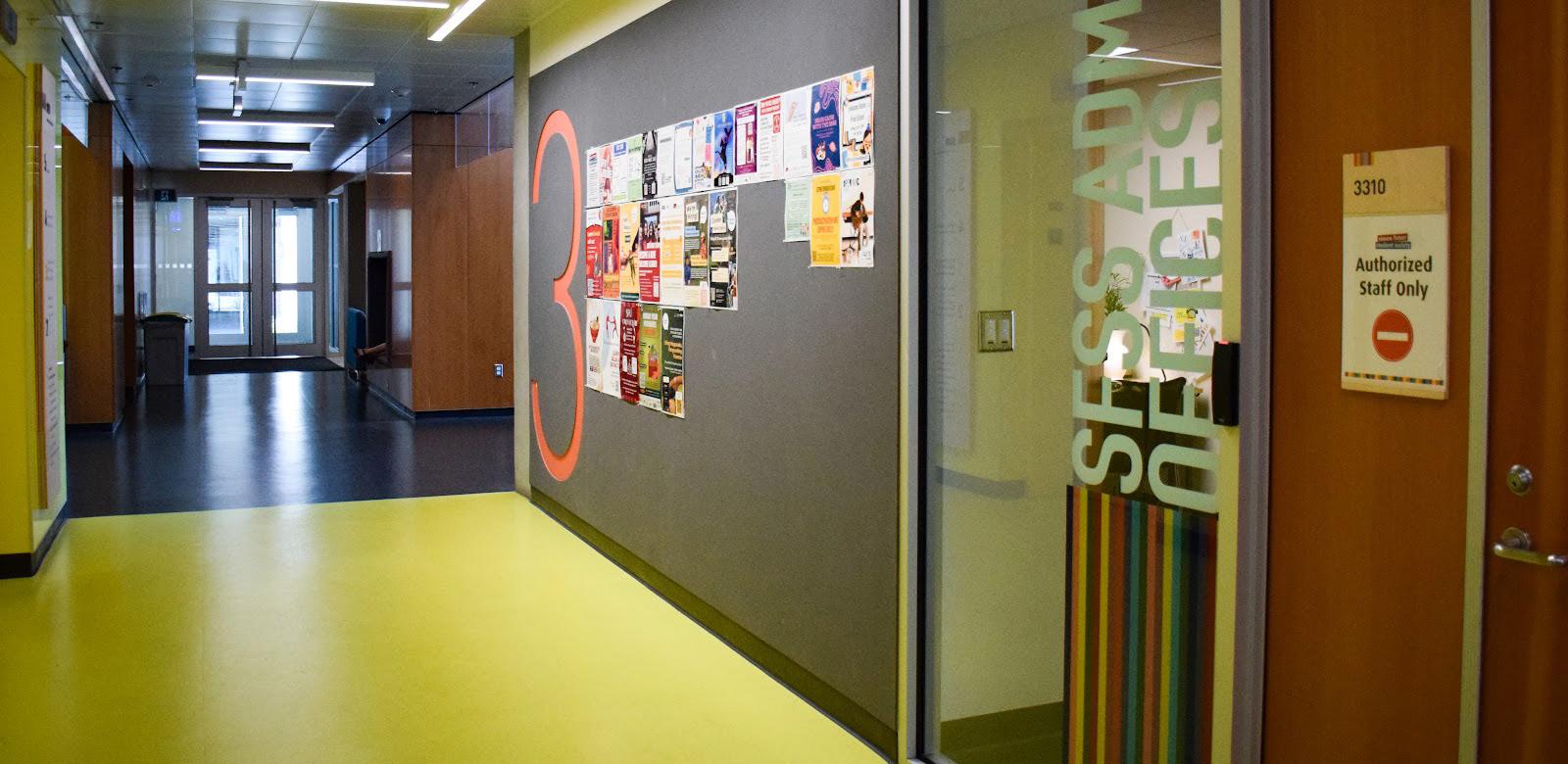
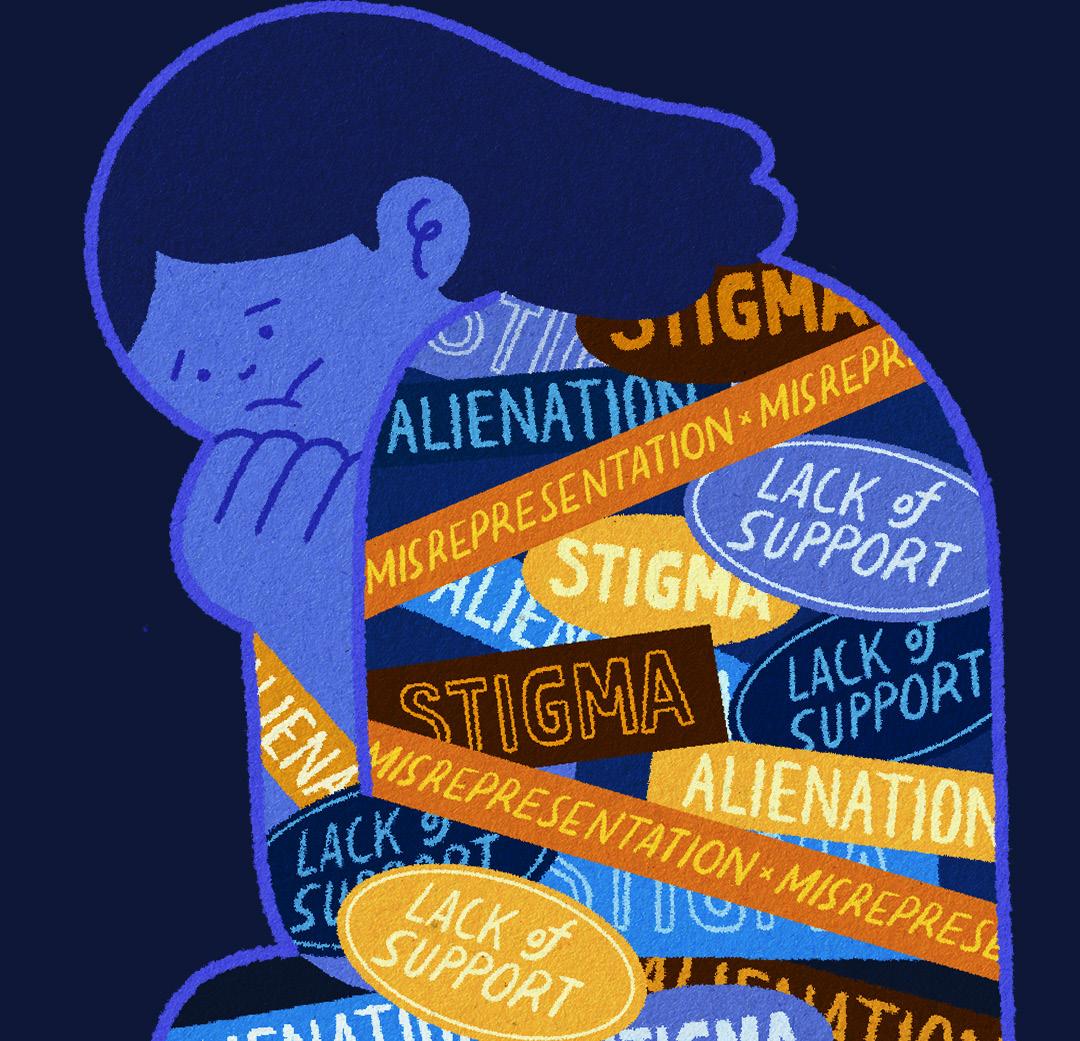
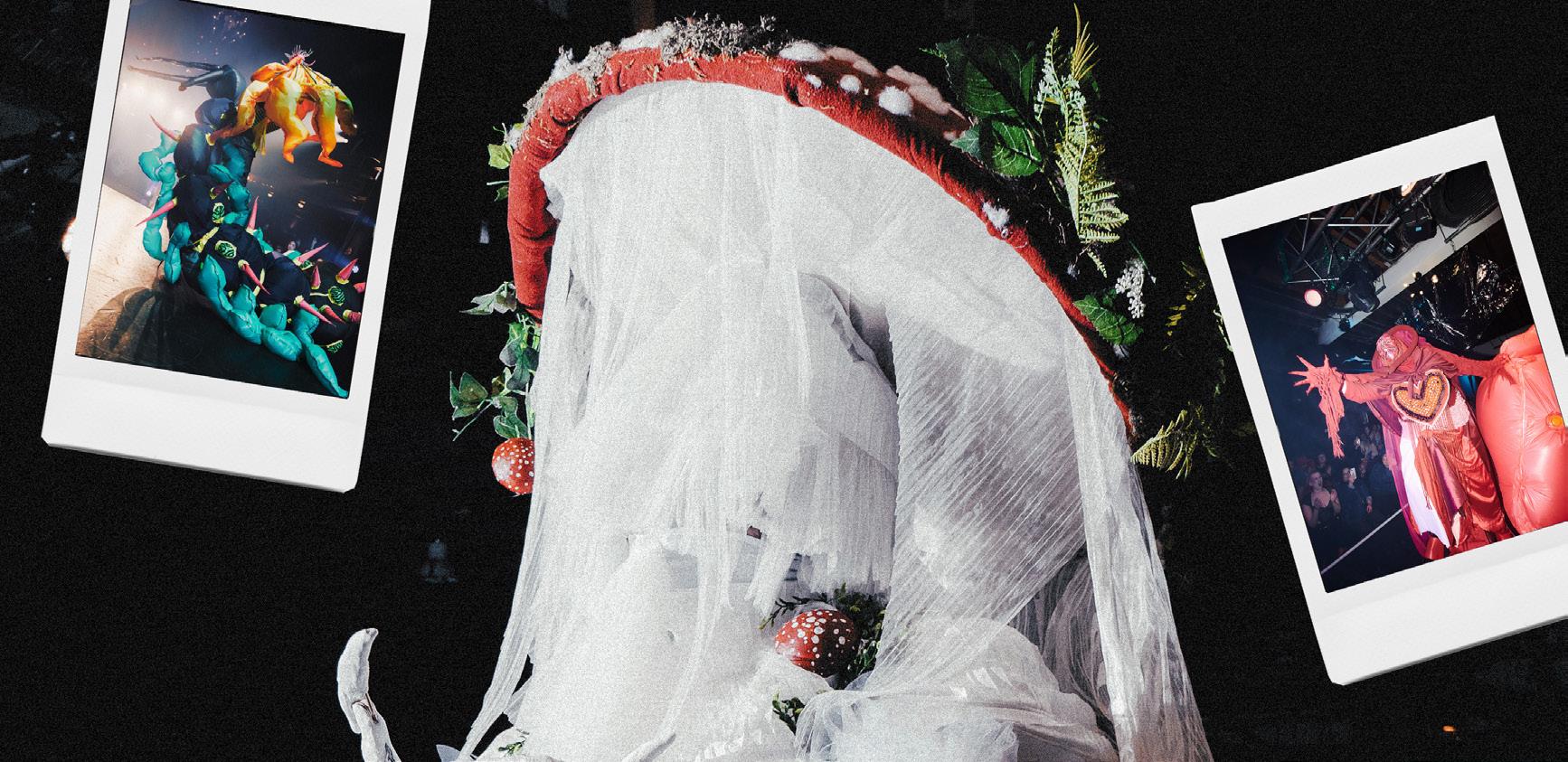
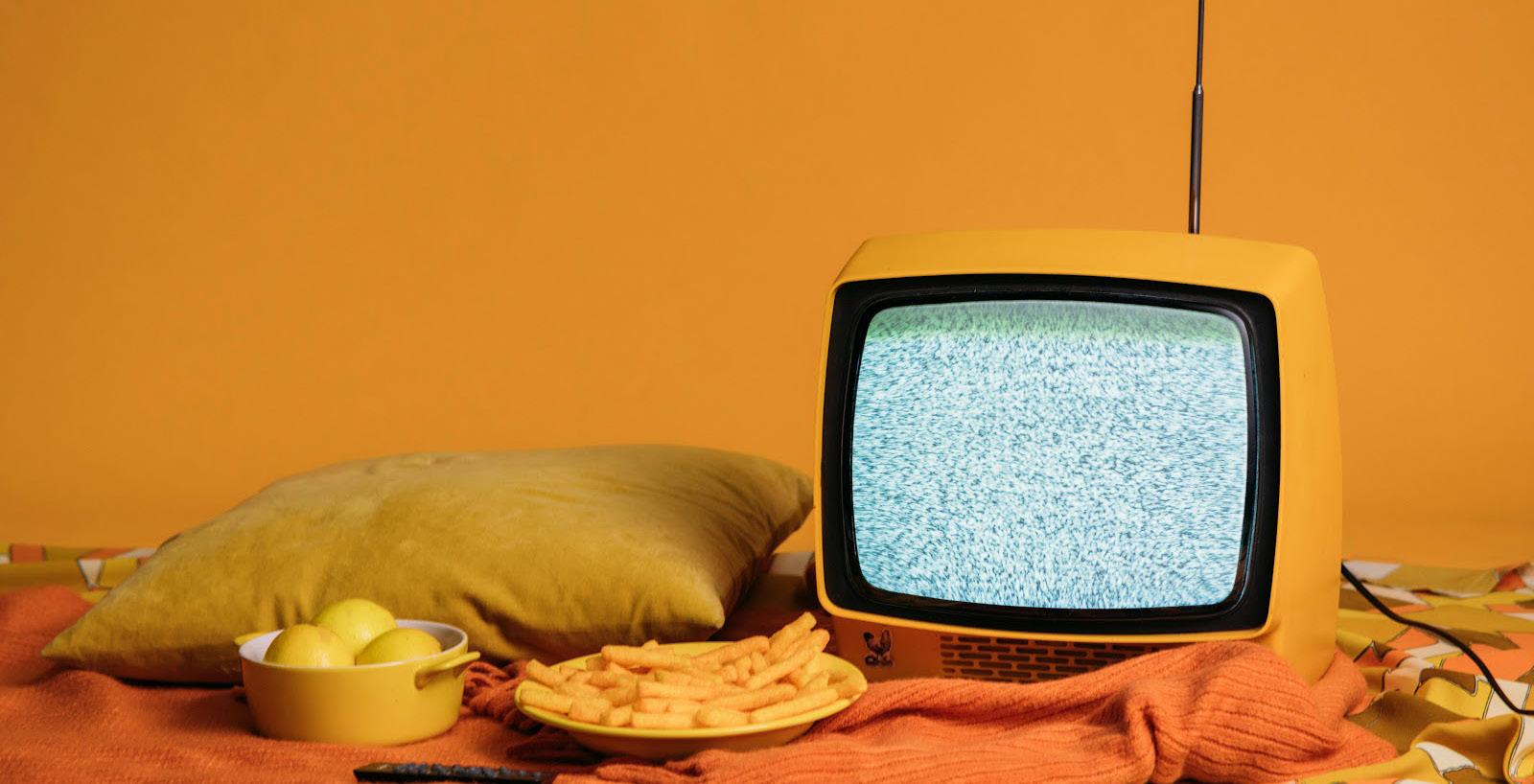
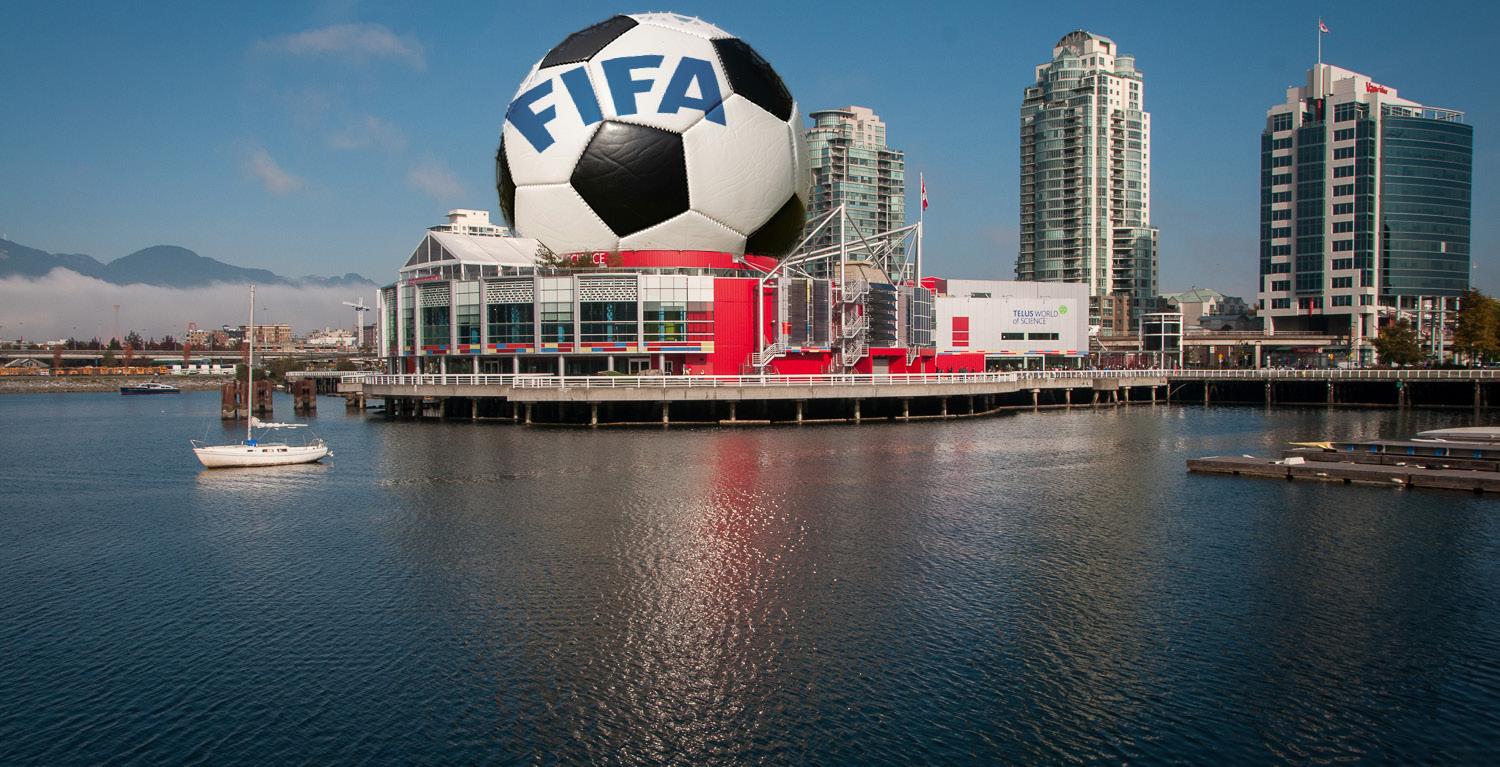
EDITORS-IN-CHIEF
C Icart and Michelle Young eic@the-peak.ca
COPY EDITOR
Michelle Young copy@the-peak.ca
FACT CHECKER
Karly Burns factchecker@the-peak.ca
NEWS EDITOR Hannah Fraser news@the-peak.ca
NEWS WRITERS Corbett Gildersleve and Lucaiah Smith-Miodownik
OPINIONS EDITOR Zainab Salam opinions@the-peak.ca
FEATURES EDITOR
Daniel Salcedo Rubio features@the-peak.ca
ARTS & CULTURE EDITOR Phone Min Thant arts@the-peak.ca
HUMOUR EDITOR Mason Mattu humour@the-peak.ca
STAFF WRITERS Noeka Nimmervoll, Ashima Shukla, and Yildiz Subuk
WEB MANAGER Subaig Bindra web@the-peak.ca
university Dr. Burnaby, BC V5A 1s6
PROMOTIONS MANAGER
Juliana Manalo promotions@the-peak.ca
PROMOTIONS ASSISTANT
Petra Chase
PRODUCTION & DESIGN EDITOR Abbey Perley production@the-peak.ca
ASSISTANT PRODUCTION EDITORS
Mary Gigiberia and Minh Duc Ngo
PHOTO EDITOR
Gudrun Wai-Gunnarsson photos@the-peak.ca
BUSINESS MANAGER
Yuri Zhou
business@the-peak.ca (778) 782-3598
BOARD OF DIRECTORS
Juliana Manalo, Liam McKay-Argyriou, Yildiz Subuk, Olive Visser, and Yuri Zhou
CONTRIBUTORS
Afsaneh Keivanshekouh, Zahra Khan, and Thwin Than Thar Nway
PEAK ASSOCIATES
Cassandra Nguyen, Audrey Safikhani, and Katie Walkley
COVER ARTWORK
Photos: Courtesy of Simone Chnarakis (outer) and Danielle Lastres (centre)
Edit: Gudrun Wai-Gunnarsson


Follow us on Instagram, at @thepeakatsfu and check out our YouTube channel, The Peak (SFU).
READ THE PEAK
Pick up paper copies at any SFU campus Find extended, cited, and web-accessible articles at the-peak.ca Download digital issues at issuu.com/peaksfu
The Peak is SFU's weekly student newspaper published every Monday, by students, for students. We’re funded by a student levy and governed by a Board of Directors. Any SFU student can apply to become staff.
We reserve the right to edit submissions for length, as well as style, grammar, and legality. We also reserve the right to reprint submissions at any time, both in print and on web. We will not publish content that is sexist, racist, or otherwise prejudiced.
Waututh),
(Kwikwetlem),
(Kwantlen), qicə
(Katzie), Semiahmoo, and Skwxwú7mesh (Squamish) Peoples. Unceded means that this land was never surrendered, relinquished, or handed over in any way. We recognize that the unceded land that we occupy includes not only the SFU Burnaby campus, but extends to the land occupied by the Vancouver and Surrey campuses as well.
COUNCIL CLAIM
Survivor of Nagasaki bomb speaks on nuclear weapon abolishment Student files claim related to 2024 SFSS annual general meeting
Peace Boat and Mines Action Canada work towards a nuclear weapon-free world
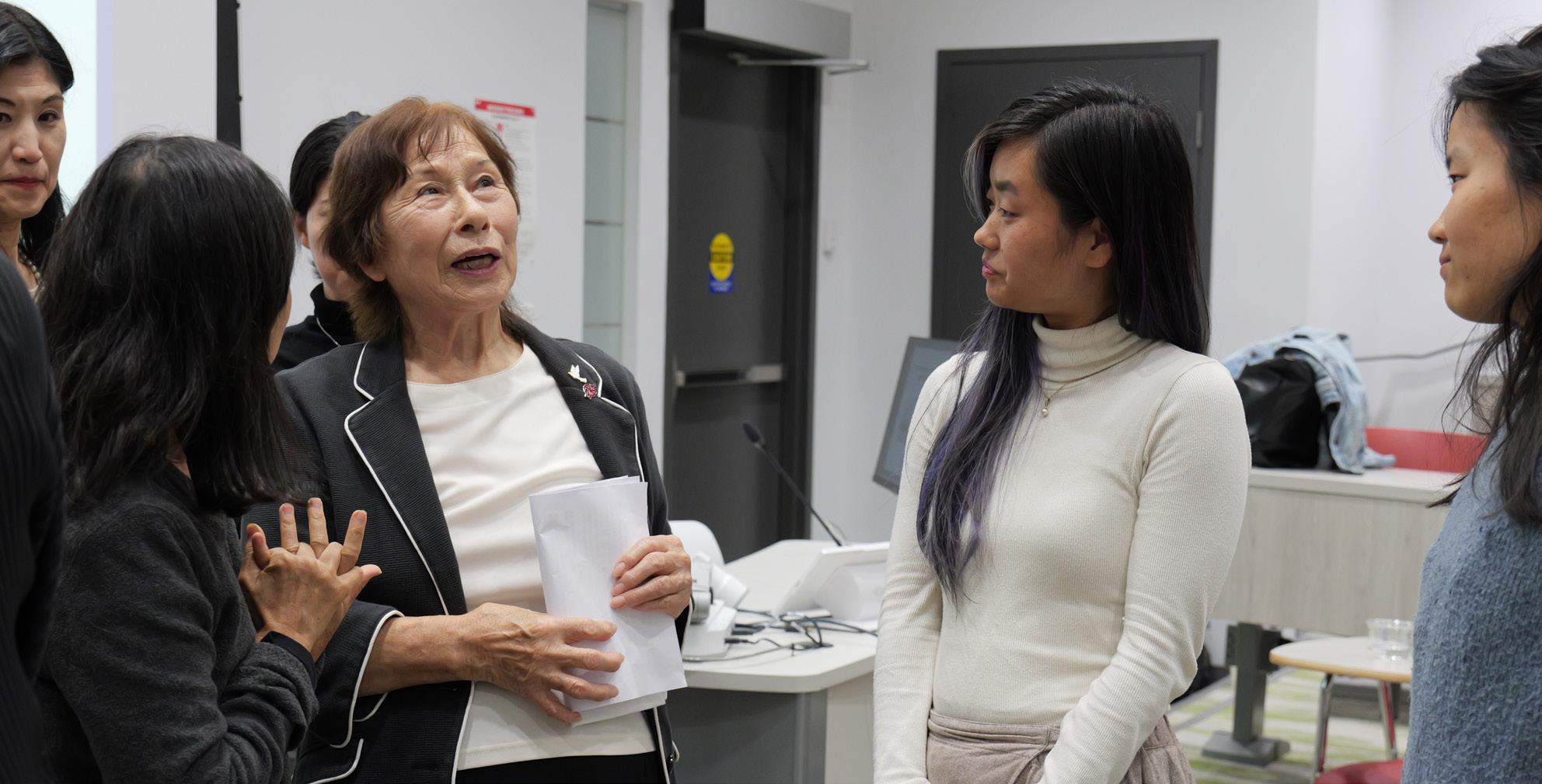
Content warning: graphic descriptions of bodily harm, death, miscarriages, and sickness.
On July 21 at the Harbour Centre, SFU International Studies hosted a lecture on building a future free of nuclear weapons. The event highlighted the collaborative efforts of Peace Boat and Mines Action Canada to educate people on the realities of nuclear war and push governments to choose peace. The lecture featured a speech from Nagasaki atomic bomb survivor Kuramori Terumi, who spoke on her experiences from the time of the devastation and its ongoing aftereffects. The Peak attended the event to learn more.
Rika Watanabe, the international coordinator of Peace Boat, explained that they are a Japanese non-governmental organization that uses a 2,419-passenger boat to promote peace internationally. Their global voyage allows hibakushas (atomic bomb survivors) to share their stories. Mines Action Canada is a non-governmental organization who works to end the use of weapons that cause sweeping damage, including nuclear weapons.
Paul Meyer, adjunct professor at SFU, also provided context for the event. “There are approximately 12,000 nuclear weapons still extant in the world, any one of them with a capacity for devastation far greater than the bombs that were dropped on Hiroshima and Nagasaki,” he said. The death toll for the Hiroshima bomb was approximately 80,000 from the explosion, with thousands dying shortly after from radiation poisoning. This bomb, dropped by the US on August 6, 1945, killed approximately 140,000 people by the end of the year. Three days later, the Nagasaki bomb was dropped, taking another 74,000 lives.
The Bulletin of Atomic Scientists notes that “any nuclear explosion creates radiation, heat, and blast effects that will result in many quick fatalities.” Nuclear weapons can cause extensive damage, including severe burns, the disfigurement of skin, and organs that hang out of the body. Exposure to nuclear bombs is also characterized by prolonged suffering from “radiation-related cancers and other illnesses” across generations.
Terumi shared a personal testimony as a hibakusha, translated from Japanese to English by Kaya Nagayo. Although she had no memories of the bomb itself, being only one year old when the bomb dropped, she was surrounded by the aftereffects long after the explosion.
Terumi shared how her father came home safely on the day of the bombing. However, in the following days, he helped clear the debris and aided many injured people at the epicentre of the bomb. “Ten years after the bombing, my father contracted a lung disease,” she shared. Her father was later diagnosed with cancer and passed away.
Following his death, Terumi and her family suffered through poverty. For Terumi’s older sister, the physical effects of the radiation and the societal stigma of being a hibakusha affected her significantly. “She repeatedly went through miscarriages. Her body was unable to produce children, and unbeknownst to me, this older sister had been forced to get a divorce,” Terumi said. Their father’s same symptoms from the bomb later befell her older sister and Terumi’s older brother, and they passed away.
I do not want anybody else to experience the suffering, the sadness, the tragedy of atomic bombs. We hibakushas know the horrible nature of radiation. I want to continue to tell the world about the truth of this awful radiation.
KURAMORI TERUMI
NAGASAKI ATOMIC BOMB SURVIVOR
“I do not want anybody else to experience the suffering, the sadness, the tragedy of atomic bombs. We hibakushas know the horrible nature of radiation. I want to continue to tell the world about the truth of this awful radiation,” said Terumi, in the final moments of her speech.
Meyer highlighted that due to the current “upsurge in geopolitical tensions,” it is crucial to illustrate the devastation of these events to the public, especially the younger generation. “80 years after those terrible events, memories are faded from public consciousness.”
Peace Boat and Mines Action Canada have worked together for around “eight years as part of the International Campaign to Abolish Nuclear Weapons,” which works for the implementation of the Treaty on the Prohibition of Nuclear Weapons, shared Erin Hunt, executive director of Mines Action Canada. In 2017, this treaty was adopted by the United Nations. However, neither Canada nor Japan are currently part of it.
Terumi called for everyone in the audience to help “advocate so that nuclear-armed states will get rid of their nuclear weapons so that the governments of countries like Japan, like Canada, will sign the Treaty on the Prohibition of Nuclear Weapons.”
Bylaws were not followed properly, claims the student
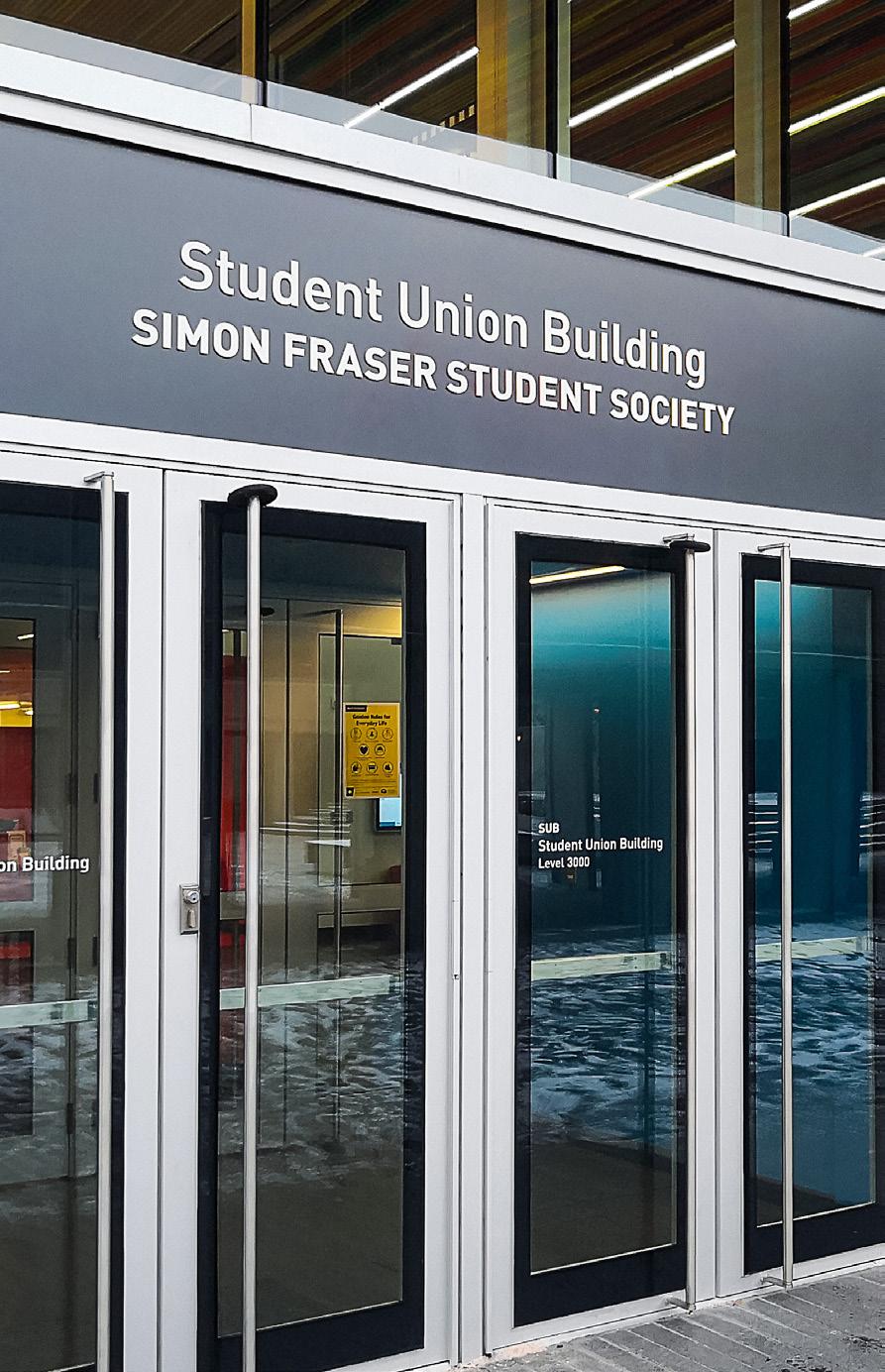
On May 27, Jim Nosella, a sustainable energy engineering student, filed a claim against the Simon Fraser Student Society (SFSS) with the BC Civil Resolution Tribunal (CRT) concerning how the SFSS conducted their annual general meeting (AGM) last year. The CRT is an online tribunal that allows people to submit claims without having to obtain a lawyer and go to court.
During the meeting, a disagreement arose between Benjamin Tischler, the 2022 vice-chair of Council, and previous SFSS president Emmanuel Adeboyega around whether three bylaw motions could be voted on, as the meeting took longer than 30 minutes to reach quorum.
Quorum is “the minimum number of members that must be present in order for a meeting to be considered legitimate.” According to bylaw 4.4, if quorum has not been reached “within 30 minutes from the time appointed for the AGM,” 20 members total can make quorum and the meeting can deal with items listed in bylaw 4(3) a–f. Bylaw changes are not included in this. Ultimately, the three bylaws motions were voted on and passed during the AGM.
Nosella brought this issue to the CRT to request that the bylaw changes be suspended and revoted at a future AGM that meets the quorum requirements.
According to the claim, the AGM in 2024 was scheduled to start at 5:30 p.m., but by 6:15 p.m., quorum had not been reached, and the meeting was not called to order until 6:33 p.m. As such, Nosella claimed the bylaw motions should not have been voted on. He told The Peak that this issue was “raised by multiple members, myself included, during the AGM.”
The SFSS was provided the claim on June 25, and on July 10, they responded to the claim, saying that they disagreed with Nosella’s interpretation of that clause: the bylaw “does not impose a requirement for the AGM to meet quorum at a certain time.” At the time of writing, Nosella awaits the arbitrator’s decision on who is in the right.
PHOTO: COURTESY OF PEACE BOAT
PHOTO: AFSANEH KEIVANSHEKOUH / THE PEAK
NOEKA NIMMERVOLL · STAFF WRITER
CORBETT GILDERSLEVE · NEWS WRITER
Five SFSS full-time union staff receive layoff notices
CUPE president claims the SFSS is not following their collective agreement
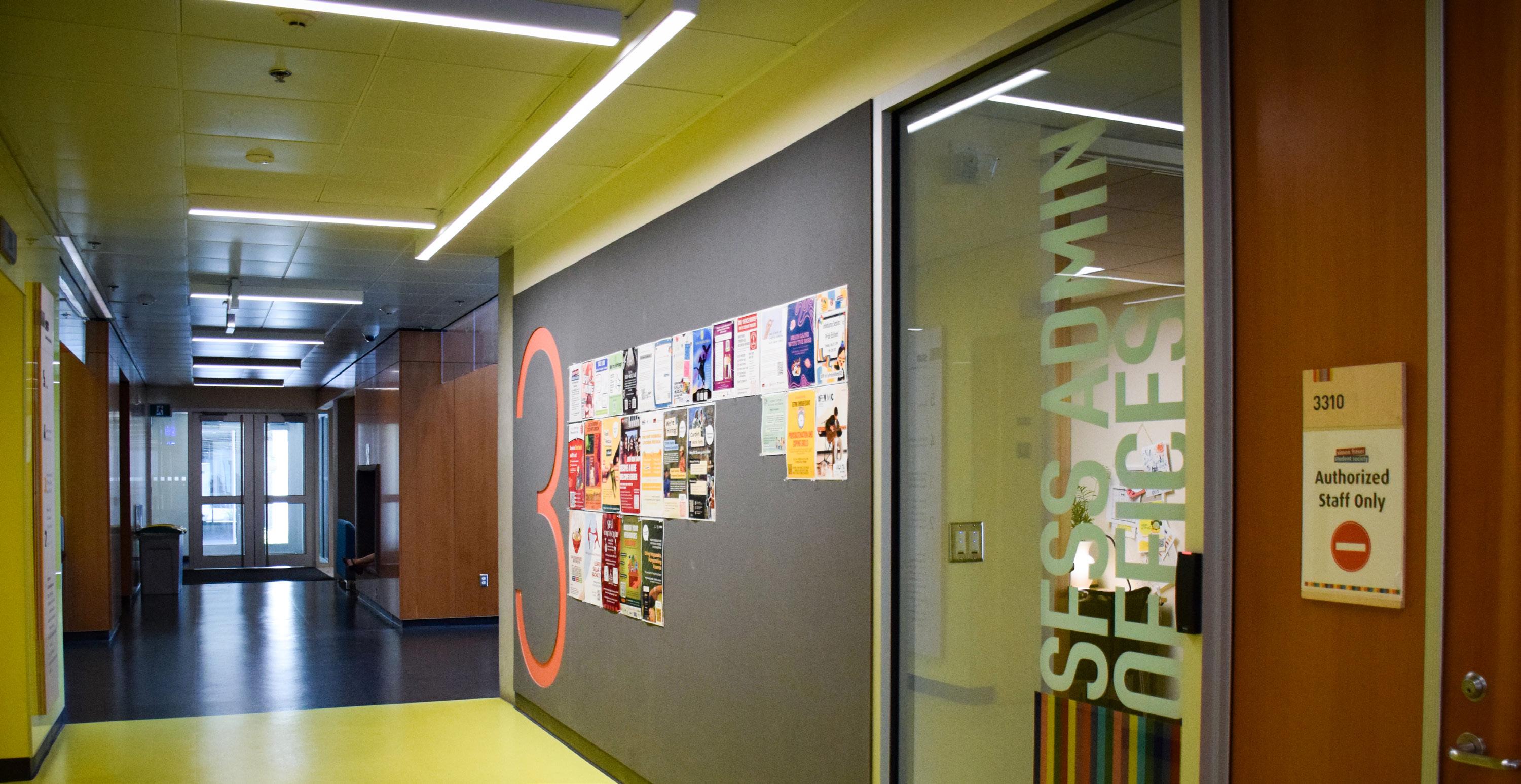
The Simon Fraser Student Society (SFSS) has initiated staff layoffs, with five out of eight full-time union positions affected as of July 25. All the positions either support student activities or the SFSS’ operations, and do not include SFSS executives. The positions are also represented by CUPE 3338, a non-profit union organization.
The affected positions include the student advocacy coordinator, campaigns and mobilization coordinator, communications coordinator, one of the member services coordinators for clubs, and the member services coordinator for student group events.
According to the SFSS website, 18 full-time positions are currently filled. Laying off employees from eight of these positions would mean cutting nearly half of the full-time staff. The Peak spoke with CUPE 3338 president Shaneza Bacchus to learn more.
Bacchus said CUPE received notice from the SFSS of the layoffs on July 7, but the SFSS did not specify which positions would be affected. The reason given was “budgetary constraints and the viability of the SFSS.” The Society’s 2024–25 operating budget indicates their total revenue was about $3.1 million, while their total expenditures were about $4.1 million. This puts the SFSS approximately $1 million in debt.
Bacchus replied to the notice the next day, saying the union would consult CUPE’s national group. CUPE also wanted to schedule labour adjustment planning meetings with the SFSS. These meetings require the Society and the union to review the financial situation, who would be affected, and develop a plan that oversees the layoffs, according to section 54 of the BC Labour Code. Additionally, that section sets a 60-day period to develop this plan before layoff notices go out.
On July 16, Bacchus met with the SFSS to discuss the notice for layoffs, which was issued while the two groups were bargaining around their collective agreement. This agreement sets the working conditions, wages, benefits, and other matters between the two groups. The current agreement expired in August 2024 and is still in force until a new one is agreed upon.
During this meeting, the SFSS specified that eight positions were being laid off, and CUPE responded that bargaining and
the layoff process can’t happen at the same time. “It’s acting in complete bad faith to issue a notice of layoff with bargaining (already) scheduled,” Bacchus said. She explained that the same people being laid off would also discuss moving forward through bargaining: “It’s not going to be productive or efficient.” Referencing CUPE’s recent news posts, up to two of the union’s members could be removed.
An employer still has limitations. They can’t just do what they want, and how they want, when they want.
CUPE asked the SFSS to proceed with one process or the other, but the SFSS moved forward with both.
The next day, Bacchus said the SFSS started issuing notices of layoffs to affected staff without informing the union ahead of time. She sent the SFSS an email stating that they were “aghast that this decision was made,” and that the SFSS “did not treat the impacted individuals with the basic dignity and respect by scheduling face-to-face meetings.”
Bacchus then received a tip an hour later that the SFSS scheduled face-to-face meetings with those staff without union representation.
According to Bacchus, she and Bridget Barker, CUPE’s vicepresident and lead steward, went to the Student Union Building to stop this. “We confronted the operations [Patience Okuku] and HR [Chandra Trinh] leads firmly for their entire handling of the notice of layoffs. They denied the meetings happened. We
then met with impacted staff briefly outside of the restricted staff area because they were in shock,” Bacchus said.
“An employer still has limitations. They can’t just do what they want, and how they want, when they want,” she said, concerning the whole process. “It’s operating so fundamentally backwards.”
The Peak reached out to the SFSS about the reasoning behind the layoffs, the timeline and process followed, their compliance with the Labour Code, and how these changes will affect bargaining and the Society moving forward. They stated Council “is limited in the information it can share at the moment, and we will be sharing more once things are better solidified.”
For now, they said, “the Board of Directors approved layoffs in accordance with article 37 of our collective agreement,” and, as Bacchus mentioned, that “this decision is part of a broader strategy to address financial hardship and budget constraints” for the Society’s sustainability. The SFSS emphasized their commitment “to working collaboratively with CUPE 3338, and to upholding our collective agreement, ethical standards, and equity commitments in all decisions affecting staff and students.”
On July 23, the union filed a group grievance with the SFSS for the notice of layoff, stating six areas where the collective agreement was violated. Grievances under article 41 of the collective agreement are any issues with how the agreement is interpreted and/or followed. These are first handled between the union and the SFSS, and if they’re unable to resolve it, it can proceed to arbitration. At the time of the interview, Bacchus said the union is trying to schedule meetings with the SFSS around this.
Under the current SFSS-CUPE 3338 collective agreement, permanent staff have a few options when presented with a layoff. They can take a severance payout or “bump” another staff member with lower seniority.
“If more members take the right to bumping, then that can take additional weeks to implement [ . . . ] and that staff person would then go through the layoff process,” stated Bacchus. “It’s such a ripple effect.”
PHOTO: AUDREY SAFIKHANI / THE PEAK
SHANEZA BACCHUS · PRESIDENT, CUPE 3338
SPACE BEYOND STIGMA
People with psychosis must be supported
Barriers to accommodations and access contribute to the problem

ZAHRA KHAN · SFU STUDENT
ZAINAB SALAM · OPINIONS EDITOR
Psychosis is a mental health condition that affects a person’s perception of reality. It can occur at any time and is increasingly common. The Centre for Addiction and Mental Health estimates that 3% of people will face an episode of psychosis one or more times in their life. Despite this prevalence, psychotic people are pushed to the margins — and remain profoundly unsupported. Those who experience psychosis are sidelined in favour of maintaining the status quo of neurotypical thinking. Psychotic people need support in university settings and outside of them.
It is important to establish that psychosis is not just an internal experience. It affects how others perceive individuals with psychosis; whether or not they disclose it. The way psychotic people experience psychosis leads to being persistently labelled for their experiences whether they want to be or not.
Public stigma remains a powerful barrier to support and inclusion. Public stigma could emerge from the perceived social support received by someone in psychosis, or with persistent psychosis. Psychotic people are depicted in the media as wholly antisocial beings or as killers, which in turn alienates psychotic people from their peers, institutions, and care systems even further.
Moreover, stigma is entrenched into history and institutions. The diagnosis of psychosis has a fraught history. Even now, many people hesitate to seek help. Students battle the perception that disclosing mental illness may lead to judgment, and lost opportunities. Both public perceptions and selfperceptions of psychiatric disorder have negative effects on the possibility of a sufferer seeking help.
Recognizing and even celebrating psychotic experiences is essential to fight public stigma and psychosocial disability. Our inner realities are not distortions — they are valid, complex, and worthy of recognition.
Early intervention in the case of psychosis looks like psychiatric help on the advent of delusion — or at least, that’s what it looks like currently. Methods of early intervention can involve support groups, reconnection with family, and equal access to accommodations like exam re-takes or assignment extensions. Furthermore, time off from studies may put students back on track. And psychiatric help is available if such an avenue for healing is one that they wish to pursue. But really, there is no one-size-fits all solution. What is important is the implementation of compassion.
True support means choice, compassion, and believing that psychotic people belong.
The Bright-er Side
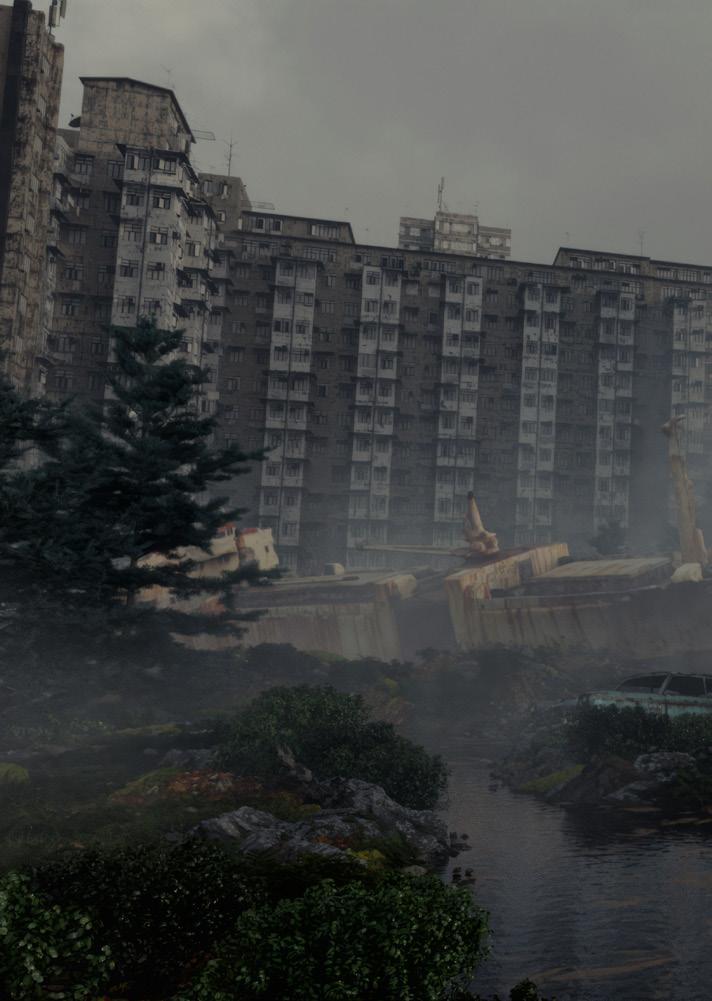
The world is not in a good place right now. Between the ongoing genocide in Palestine, the ICE kidnappings in the US, and Canada’s new legislation sidestepping Indigenous rights and environmental protections, it’s hard to feel joyful. So, what do I do when things get me down? I watch hours-long lore videos about fictional grimdark universes — worlds somehow worse than ours.
Grimdark settings are often bleak, dystopian universes where even the rare good things come at a cost. I have been listening to Warhammer 40K lore videos for over a year now — often as a sleep aid. This grimdark sci-fi universe is set 40,000 years in the future, where humanity has spread across the galaxy.
Everyone is at war with each other, there are no “good guys,” and everything is turned up to 11.
So, why do I watch these videos? Because even in moments of horror, there are stories of heroism, sacrifice, and determination. I see echoes of these qualities in everyday activism and resistance from communities organizing to stop or delay ICE raids, to people pushing back against religiouslymotivated book bans, and in First Nations groups taking legal action against the Ontario and federal governments.
True support means choice, compassion, and believing that psychotic people belong. The truth is not all people facing psychosis will benefit from the straight and narrows of psychiatric help. I think that the best way to support a student in crisis is offering different avenues of support, and above all, an understanding that their experiences matter. Without pathologizing and medicalizing psychosis as something that can be treated by psychiatry alone. I hope that psychotic people can be made to feel like they belong. Belonging means more than surviving — it means having the right to exist, and to access community, care, and dignity on our own terms.
In a strange way, these grimdark tales remind me that even in the bleakest of worlds — real or imagined — people still find ways to fight back. And when the real world feels like too much, returning to those stories of defiance helps me hold onto hope. If you’re feeling overwhelmed or discouraged, take a moment to listen to a short story of heroic defiance in a world far worse than our own.
PHOTO: NAT / UNSPLASH
The joy of grimdark
CORBETT GILDERSLEVE NEWS WRITER
CASSANDRA NGUYEN / THE PEAK
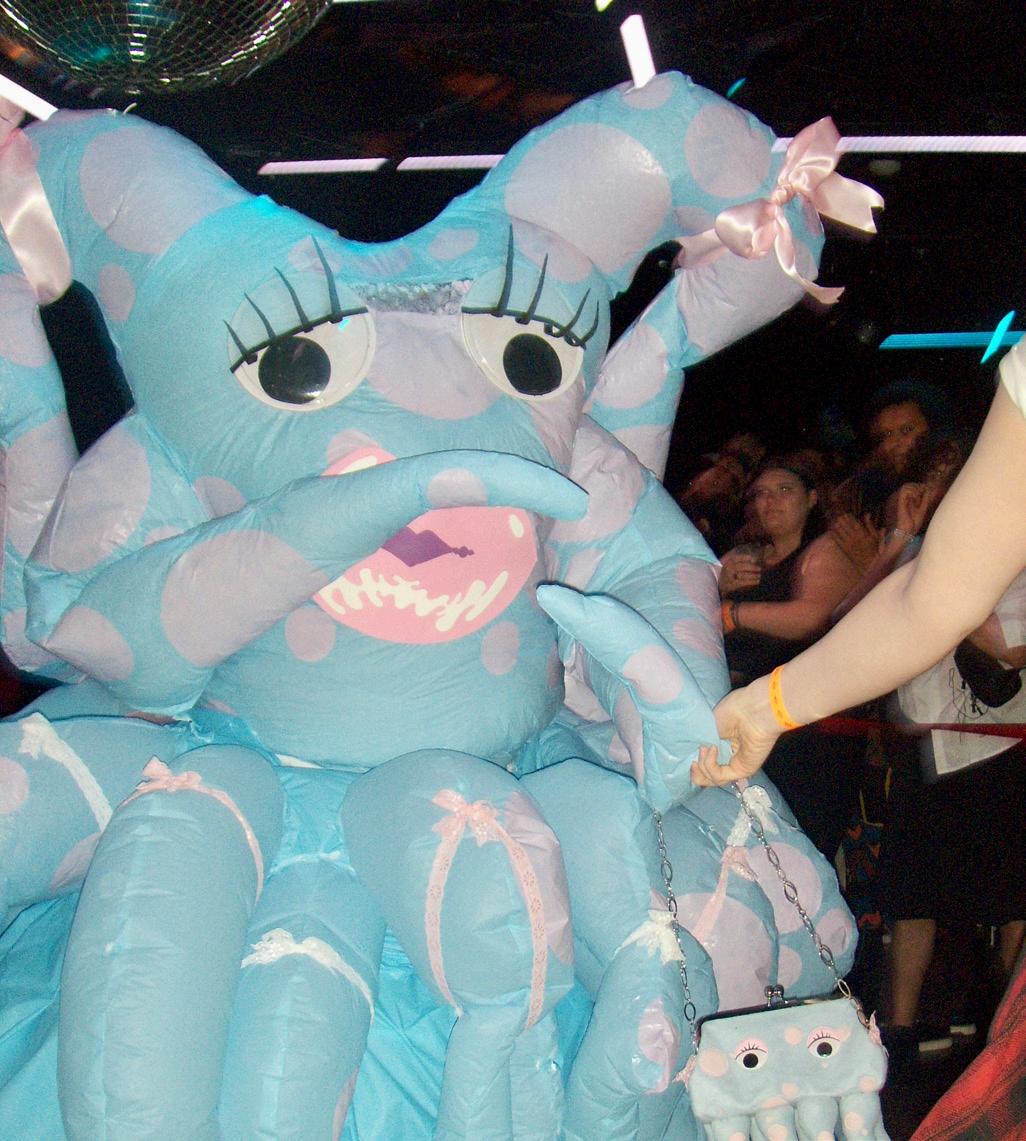
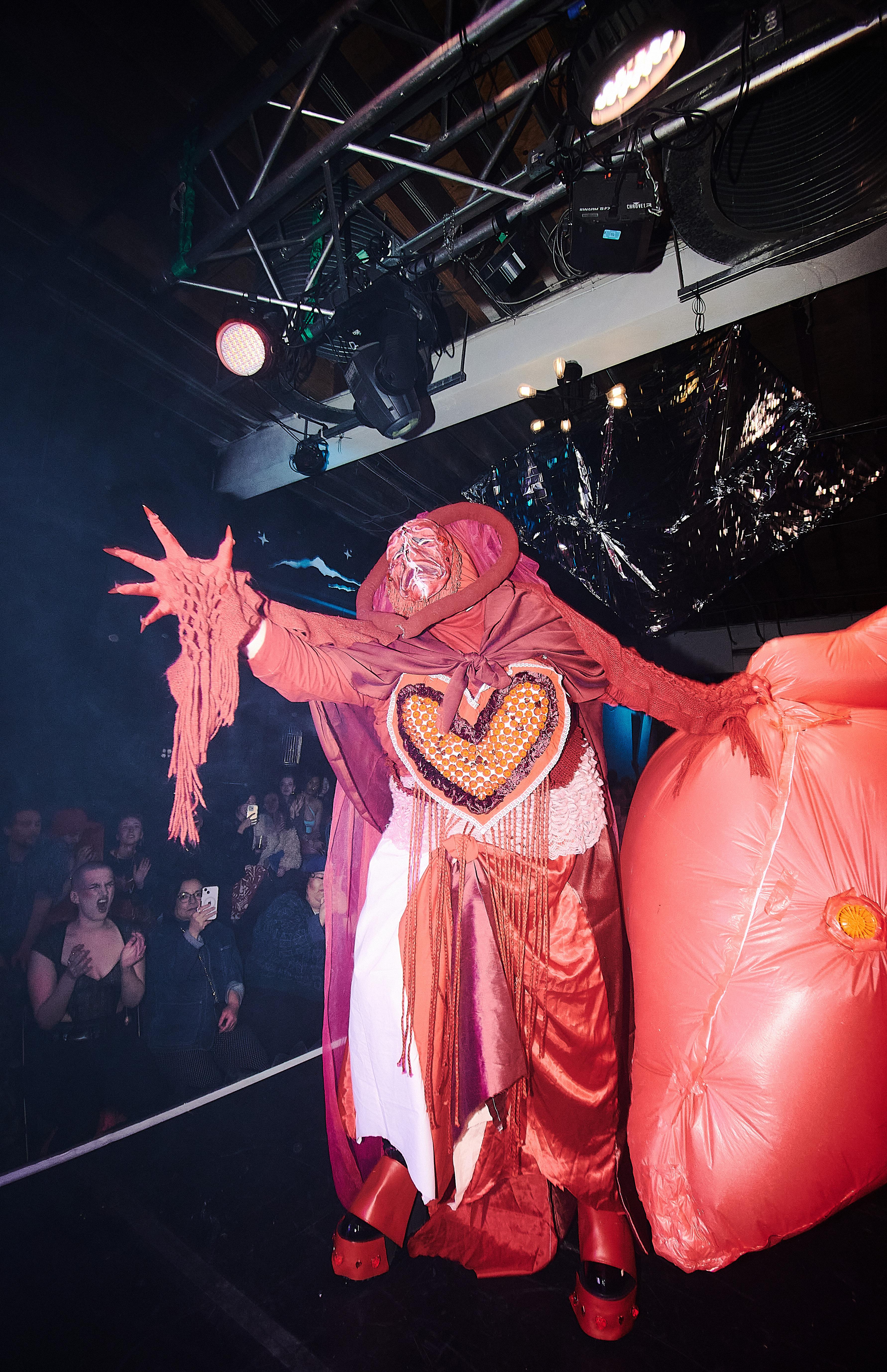


PHOTOS: Courtesy of Simone Chnarakis (page one: bottom left, centre, top left), Danielle Lastres (page two: top right), and Ash Currie (page one: top left, page two: bottom left).
SFYOU: COSTUME DESIGNER ASH CURRIE
Graduate student discusses their involvement in the local Ballroom scene
C Icart Co-Editor-in-Chief
Ash Currie is a master’s student in the department of political science. When they’re not acing their coursework, they can be found getting their 10s at a local ball. Their costumes are elaborate and unique, and their passion for creating is infectious: they’ve embodied an ethereal red and white mushroom and a larger-than-life inflatable octopus inspired by Lady Gaga. I sat down with them to learn more about their work and the vibrant queer subculture that is Ballroom.
What is Ballroom?
Currie importantly points out that “you shouldn’t talk about Ballroom without going into the history of it.” House Ballroom culture emerged as a response to the racial bias against Black contestants in drag balls, which are pageant-style competitions where queer and trans contestants defied laws against wearing clothing associated with the opposite gender. In an effort to create a space where Black queens were celebrated, the House of LaBeija hosted the first “Black initiated ball which has now become the foundation for the Ballroom scene we are familiar with today.” In Ballroom culture, houses are essentially chosen families led by “mothers” and “fathers” and provide a safe space for 2SLGBTQIA+ individuals who, in some cases, have been estranged from their family. The House of LaBeija, for instance, was founded by Crystal LaBeija, a “pioneer of civil rights, equality, and integration of pageants.”
Currie and I first learned about the history of Ballroom through Paris is Burning, a documentary about queer, trans, Black, and Latinx people competing in balls in 1980s New York. It lets the viewer into a subculture which has shaped queer culture and mainstream pop culture. Words like “mother,” “reading,” and “shade” all originate from the Ballroom scene and are defined and explained in the film. What do balls look like now?
“ The way that I’ve heard it described is like a queer party with competition elements. There’s fashion categories, there’s vanity categories like ‘Face’ and ‘Body.’” Currie explained that marginalized people would often walk in these categories to see whether or not they could make it in the modelling industry. Participants first walk individually in front of the judges for approval. If they receive their 10s, they battle against each other until one person is left and wins the category.
“One other category as well is ‘Realness,’ which is a really interesting category, because it’s really about safety. It’s about passing as a cishet person. And some people can have conflicted feelings about ‘Realness,’ especially nowadays when queerness has become more accepted in the general public. But ‘Realness’ really serves as a place for trans people, but also queer people of all backgrounds to come and be like, ‘Will I be safe if I’m going to present like this in front of cishet people? Am I going to be able to safely blend in?’ And for trans people, it may not just be about safety. It could also just be celebrating the progress you’ve made to actually pass as who you are.”

Which category do you walk in?
When it comes to fashion categories, “we have ‘Runway,’ which is more typical, like runway walking, and then we have a little bit more inventive categories, like the one that I do is ‘Bizarre,’ which is more of making really big, extravagant avant-garde costumes.”
I knew this category would showcase their skills right away because in October 2022, Currie showed me a grim reaper raven costume they had made for Halloween, which happened to also fit the description of a ball that was happening at The Birdhouse. While I don’t remember this, Currie insists I was a person who had encouraged them to walk. Although they didn’t win the “Bizarre” category that night, Ivy Andromeda, a mother from a local house, took note of their talent and cheered them on to continue walking.
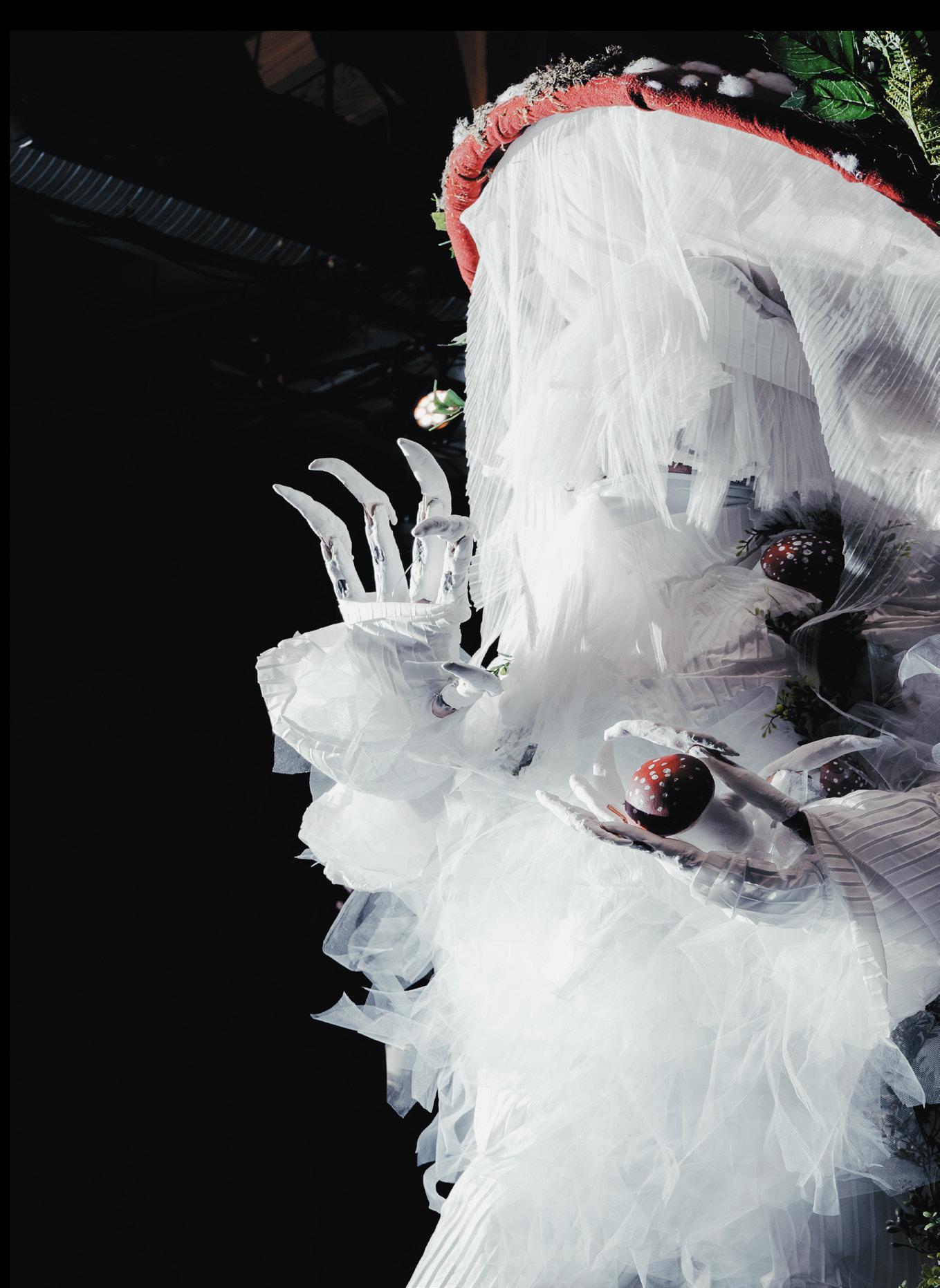
Currie then attended a “Bizarre” workshop taught by Mother Ivy Andromeda, and the rest is history.
Tell me about your house.
“I am in the house of Andromeda. It is run by Mother Ivy Andromeda.” They’re “a ‘Bizarre’ walker who’s been walking for at least seven years, like to the very start of the Ballroom scene in Vancouver, because the Ballroom scene is fairly young in Vancouver compared to a lot of other places.”
“We’re a very DIY punk house, and I think that a lot of that is because of Ivy. There’s not a lot of ‘Bizarre’ walkers, period. On an international scale, ‘Bizarre’ is one of the least-walked categories because of the amount of effort that goes into it. You’re expected to completely hide any element of humanity and make these very big, larger than life costumes, and sometimes balls are only announced with two weeks’ notice. So, you have very little time to put something together.”
What’s your process for designing a costume for a ball?
“When a ball is announced, they have an effect [costumes, appearance, theatrics, presentation] description. And so it’s kind of like what the judges are looking for for your effect.” Currie explained. “So I’ll just try and sit and think of a concept. Then, I will sketch it out as an aside.”
During this process Currie asks themselves, “What would make sense for my body to wear?” and “What could I make? What kind of materials do I have access to?” For materials, they typically turn to FABCYCLE, a social enterprise that prevents textile waste from getting sent to landfill by selling it to artists and designers to be reused. During the building process they turn to other members of the House of Andromeda for feedback.
Finishing with a day or two to spare can be incredibly beneficial because
“‘Bizarre’ isn’t just about the costume itself, you will need to be able to perform in whatever you’re wearing” (remember the battles I mentioned earlier?).
“There have been times where either I’ve lost a battle or other people have been chopped [disqualified, the opposite of receiving your 10s] because they weren’t performing. They were just there on the stage, or they didn’t look confident in it, or they weren’t embodying whatever it is. So, being able to get the look done in time to have at least a day before the ball, to actually put it on and try to embody whatever it is that you made is really important to actually doing well in the category as well.”
All this talk makes me want to go to more balls!
“Ballroom really, is this really vast culture that I want more people to [ . . . ] participate in, especially if they’re queer, Black, Latine. I want them to participate, and I want more people to come, spectate, and buy tickets and cheer for people that come.” Currie said. “It is such a fun, high energy . . . It’s just a great place to go to have fun, see local talent and to uplift the queer community.”
Want to be in the loop for the next ball? Check out: Van Vogue Jam: vanvoguejam.com and @vanvoguejam on Instagram Vancouver Kiki Ballroom Alliance: @vankikiballroomalliance on Instagram
SHOWSTORM: An interview with Etchos
See it live on August 6
NOEKA NIMMERVOLL · STAFF WRITER
On August 6, Vancouver-based Filipino artist Etchos will debut SHOWSTORM at the Vancouver Black Library, accompanied by Couch Jams. The Peak sat down for an interview with Etchos to hear more from the artist herself.
The following quotes have been edited for concision and clarity.
What was the inspiration for SHOWSTORM?
In the beginning of the project, I always kept telling people that it is a marriage of both of my loves, which is music and acting. I’ve always loved how TV shows extended backstories and how you get to know a character because they explain it through the TV show. Sometimes people put out music, and it’s up to the listeners to interpret it. But I thought, you know what, I can format it as a TV show, and explain what inspired these songs.
You are a Filipino artist with an immigrant background. How does this influence your work?
In the beginning, there was a lot of insecurity because I’m an immigrant. But now looking at it, you are powerful because you’re an immigrant. So I think there’s a lot of things like that in SHOWSTORM as well, where I felt so alone and then I just turned the tides around.
How would you describe your sound? Who are some of your musical inspirations?
I would describe the sound as . . . a blend of soul, ballads, and R&B. I listened to a lot of Cleo Sol. So a lot of the writing

echoes in how she writes as well. I think a lot of Adele as well. A lot of Whitney Houston. The Power Diva, Alto Belters are my source of inspiration when the music gets into production.
I want this to be out because I want people to know that it’s OK. Not in an, everything’s gonna be OK, type thing, but as in, you’re not alone.
What will the upcoming event be like for the attendees?
There is going to be a DJ spinning as guests are coming in, as well as somebody will have their art exhibited. For the show itself, the idea is that the episode plays out, and as the credits
Queerness, death, and resistance in What Happened to the Wolf?
Banned inside the country by Myanmar’s authoritarian military government, the film makes strong impressions on international audiences
THWIN THAN THAR NWAY · SFU STUDENT
Content warning: Brief mention of suicide and homophobia. War doesn’t just destroy homes, take lives, or displace millions. In Myanmar, the civil war has also tried to silence the soul of the country: its songs, its art, and, especially, its media. In 2021 — the same year the military junta staged a coup and plunged the country into violence — What Happened to the Wolf?, directed by Na Gyi, was set for release. Sadly, due to the director and lead actor’s dissent against the junta, it never reached the domestic audience on the big screen. It is now a symbol of resistance, not just because it explores mental health and queerness, but also because it was one of the last films produced before the military government retook power. Whilst the people of Myanmar never saw the film, it won international awards and is now premiering around the world.
Organized by the local Burmese community at the UBC Robson campus, many from the diaspora in Metro Vancouver crowded around the university theatre. I was greeted warmly in the usual Burmese manner as soon as I arrived. It was easy to feel welcomed when faced with Burmese hospitality.
The movie follows Wae (Paing Phyo Thu), a young woman with a terminal illness, and Moe (Eaindra Kyaw Zin), who was admitted to the hospital after attempting to take her own life upon discovering she had lung cancer. Eaindra Kyaw Zin’s role holds special meaning for Burmese audiences. A household name to many over the past decade, her portrayal of a queer Burmese woman adds a powerful layer to the film. The absence of an identity for queer Burmese women makes the sapphic representation in the film feel even more significant. In the Burmese language, there isn’t even a word for queer women and most common terms are used for all 2SLGBTQIA+
identities or are slang terms that err on the offensive. Although many queer Burmese men have historically used such slang to refer to themselves in the face of legal adversity and social stigma, queer women in the country do not even have such linguistic freedom, having no equivalent — even if they were slang — descriptions for them.
In a country where freedom of expression comes with the threat of persecution, What Happened to the Wolf? is a rare expression of Burmese art and queerness, full of beautiful shots that capture a time before the military’s reign of terror.
On the screen, Yangon — Myanmar’s main port and its former capital — unfolded with its gleaming glass towers jutting up beside older colonial relics, a visual echo of a country caught in transition. This rapid modernization of Myanmar during its brief democratic period is reflected in the characters as well, who can be seen styled in traditional Burmese longyi (
) alongside co-stars dressed in Westernized clothing. The movie showed frames of Yangon as well as the beautiful rice fields and familiar highways in its suburbs. For many in the audience who have fled their homelands and uprooted their ancestries for considerably safer lives abroad, this was more than just a
roll, the screen goes off, and then lights fade in on the band, and then I perform the track live as the credits are rolling.
What is one aspect of being an artist in Vancouver that people might not know about?
We need more community. We need more. I feel like my artistry would not be as successful if I didn’t have people around me. I think that’s one thing people should realize. It’s not a lone journey. Sometimes when I get into my feelings, I just realize I have not been spending quality time with people who actually keep me grounded.
What do you want to express through SHOWSTORM?
When I started to watch TV shows, I started to realize that, wow, I’m not alone in my struggle. To my home, to my family, the feelings that I felt were so foreign to them, and nobody understood. But when I started to watch TV shows, it all made sense. I want this to be out because I want people to know that it’s OK. Not in “an everything’s gonna be OK,” type thing, but as in, you’re not alone.
Get tickets for SHOWSTORM on August 6 on Eventbrite.
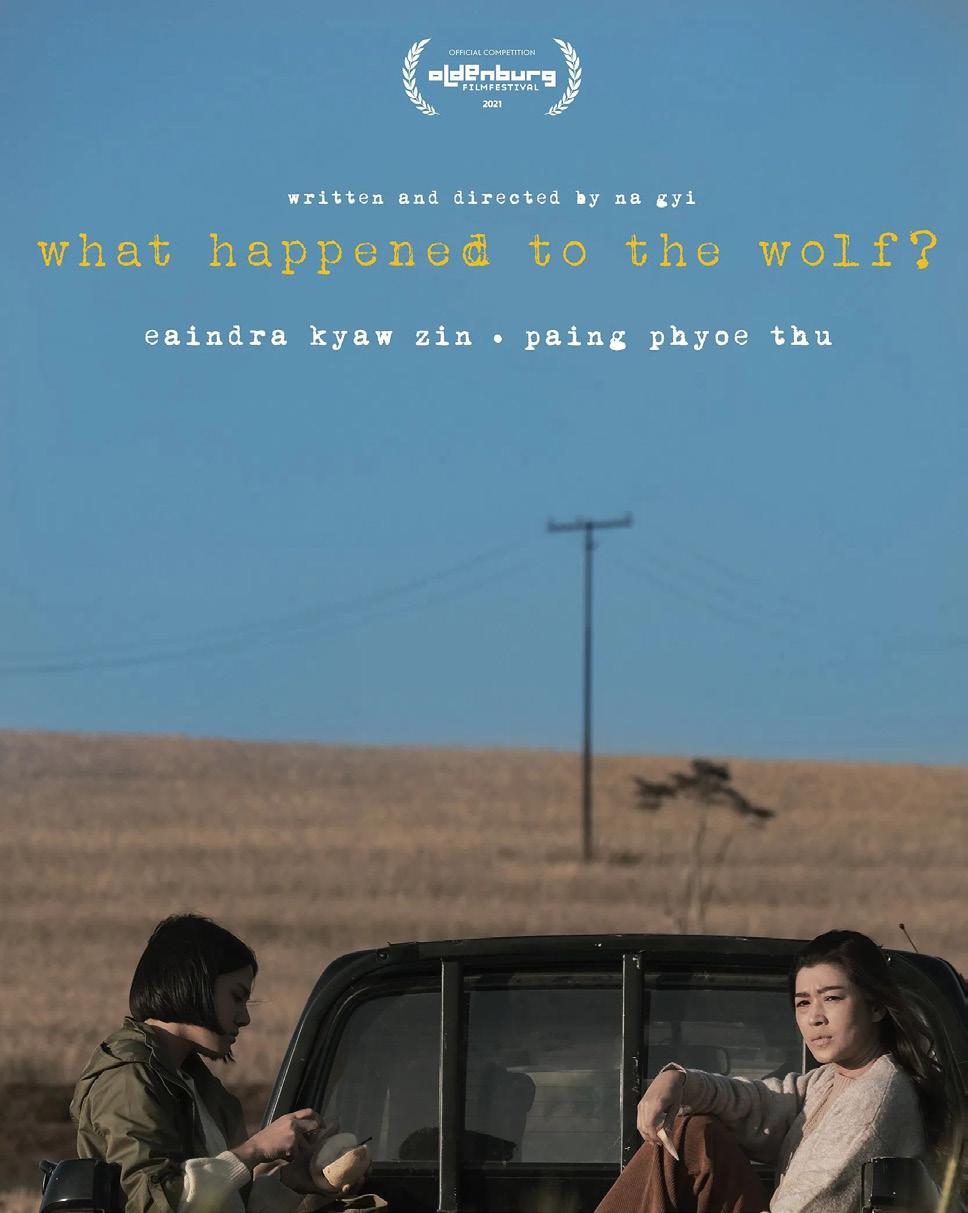
movie setting. It was a glimpse into a Myanmar that once felt within reach.
Wae and Moe’s bond unfolds slowly, often through shared music on a yellow Walkman, which becomes a recurring splash of colour that signals warmth and joy. A yellow detail subtly in nearly every scene they share, despite a quiet bloom in the shadow of death. Nevertheless, Burmese humour weaves through the heaviness, the script occasionally inciting laughter from the audience amidst heavy conversations. As the film progresses, death’s looming presence begins to soften into something acknowledged and no longer paralyzing. During shared moments of music and warmth, we see room for connection, choice and love even in the face of loss.
In a country where freedom of expression comes with the threat of persecution, What Happened to the Wolf? is a rare display of Burmese art and queerness, full of beautiful shots that capture a time before the military’s reign of terror. The success of this controversial film symbolizes the soul of Myanmar and the fight of its people, a spirit that has been beaten, but never faltered, even in the face of violence and death.
PHOTO: KOOLSHOOTERS / PEXELS
IMAGE:
BURMESE QUEER CINEMA
VANCOUVER TO TRANSFORM SCIENCE WORLD INTO GIANT SOCCER BALL
The project comes at FIFA’s request ahead of 2026 World Cup
The City of Vancouver has been selected to host several FIFA World Cup games next summer. Exciting, right? In preparation for the balltastic event, FIFA created a list of demands the city must implement as it prepares for the influx of players and fans, with various beautification initiatives and possible city road closures proposed. Recently, FIFA president Gianni Infantino added one more requirement: The giant, orb-like structure sitting atop Science World must be transformed into a soccer ball. The Peak corresponded with Infantino, Vancouver mayor Ken Sim, and several city locals for more information.
“It just makes sense,” Infantino said. “When you think of soccer, you think of soccer ball. You literally need a soccer ball to play soccer, so it’s perfect.” Infantino detailed the cognitively laborious process of coming up with such a groundbreaking concept. “This is a result of countless hours spent in the pitch room brainstorming ideas,” he said. “For a while, it was tough. We just kept thinking and thinking in circles. Then it came to us. The answer was circles.”
When asked to describe the project, Sim said to “imagine a soccer ball in your head. That’s basically what this will look like.” Regarding increased costs the project may incur at taxpayers’ expense, Sim did not appear worried. “It’s not really an issue,” he said. “We’ve actually been doing a great job of cutting costs this year. Freezing supportive housing and getting rid of the city hall gym have provided us with a hefty ball budget. In fact, we’ve actually been looking at other circular objects we can turn into soccer balls, too. So far, the Bloedel Conservatory and Gastown Steam Clock are possibilities.”
“Some estimates actually project that the ball will help boost the local economy,” Sim added. “The aerodynamics of soccer ball-shaped objects has a neurological effect on the brain that encourages people to spend more.” The Peak was unable to independently verify this claim.
The Peak spoke with a local youth soccer team to see how the next generation of players felt about the project. “I like soccer ball. Soccer ball good,” said one boy, age five, whose name has been withheld for privacy. “Me too,” echoed his friend.
“You know, I’m actually somewhat concerned about the socioeconomic impact of this initiative,” explained another girl, age three. “What does this signal about the city’s priorities? We have citizens in dire need of support, and here the mayor is agreeing to turn our science center into a giant fútbol. Is that really the most optimal move? His statements are simply fallacious. Anyways, no more questions, please. I have some delicious Play-Doh waiting for me at home.”
While construction on Science World is slated to begin soon, city officials assured the public that the museum would remain open in the meantime. In fact, rumour is that a new, ball-themed exhibit will be rolling in soon.
IMAGE: GUDRUN WAI-GUNNARSSON / THE PEAK
WORLD CUP2026



#NotClueless: SFU, like, totally gave me a private jet?
Hey Instagram fan girly pop queens! It’s your influencer queen here. You won’t believe the level of growth I’ve been on lately — both as an influencer and as a girl in the world. I’ve got lots to celebrate, which means that you have lots to read. Consider this your one non-school book for the week!
So, I was running a bit late for my GSWS tutorial. Totally not my fault, I was too busy hyping up a girl waiting for her Renaissance coffee who had clearly gone through a breakup. I can’t just walk by a literal goddess without reminding her that she’s a bad bitch and that dating is a total fad.
OK, so since I was just a little behind on schedule, I knew I wouldn’t have time to take the stairs for my usual mid-day glute workout (which I totally recommended for taking your Pilates on the go — it even helps the hot girl tummy aches). I absolutely detest being late — not only is it RUDE, but my presence totally distracts everyone and draws attention away from the fugly TA. It’s not just the sound of my Labubus knocking against each other, it’s an aura thing. Anyways, instead of taking the stairs, I fiercely strutted to the elevator and you won’t believe what happened next.
A couple of seconds after pressing the button, the metal doors parted, and down from the roof descended my brand new PRIVATE JET to pick me up in my time of need. The university seems to have finally noticed that I am the influencer queen of our school, and I deserve to be treated as such. But, honestly, I know that true artists are never appreciated in their time, so I think it must have been sent from the universe as a reminder that I am Her chosen one.
The reveal was JAW-DROPPING. I walked in and found myself surrounded by cardboard-padded walls. Talk about safety! Now I use it all the time, and I’m like, totally getting my daily meditation in while plotting my next post. #Mindfulness #SpiritualAwakening.
I’ve even noticed that they’re putting a bunch of effort into maintaining it for me because sometimes I see total randos heading in there. When I’m in the jet at the same time as the cleaning people, I can’t even tell what they’re supposed to be doing. It’s so sweet that they’re keeping all of their hard work behind the scenes for me so that I can enjoy my celeb moment free from worries.
I know some people out there are scared to see a woman thriving, but don’t even bother hating on this post because after uploading, I’m gonna shut off my notifications and see where else this private jet can take me (surely high above you haters). Get ready for some legendary travel content!
Love and kisses, your favourite totally not clueless/literally a genius influencer queen.
EDIT: GUDRUN WAI-GUNNARSSON / THE PEAK
LUCAIAH SMITH-MIODOWNIK





